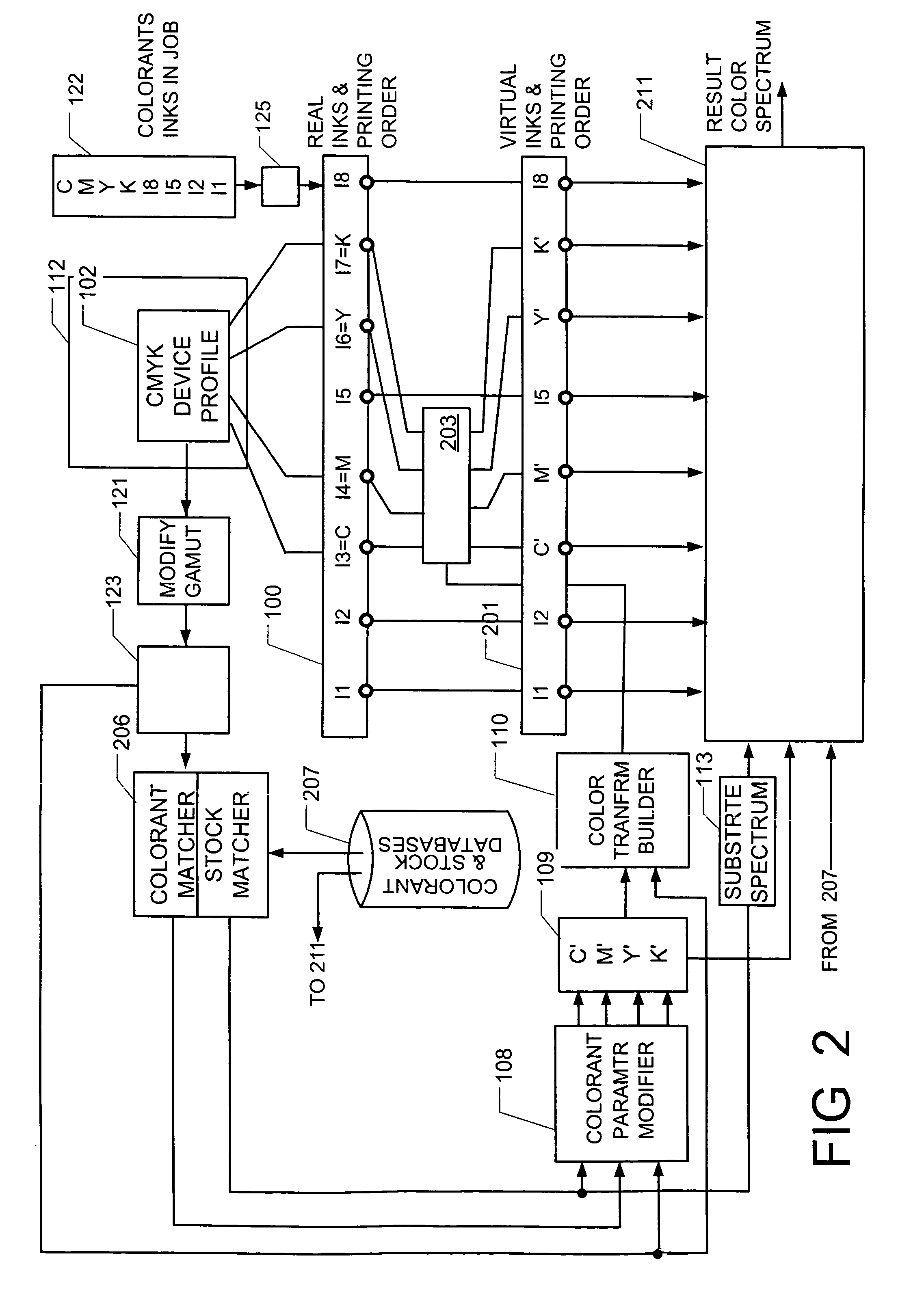Method and device for determining the color appearance of color overprints
a color overprint and color technology, applied in the field of computerized color graphics, color reproduction, electronic printing systems, can solve the problems of inconvenient use of profiles, inability to determine the color of such overprints, inconsistent or unstable behavior of color management systems, etc., and achieve the effect of accurately predicting the color of an overprin
- Summary
- Abstract
- Description
- Claims
- Application Information
AI Technical Summary
Benefits of technology
Problems solved by technology
Method used
Image
Examples
embodiment 400
[0053]The device profile containing the spectral information includes the reflectance spectrum for value values of λ for various overprints of the CMYK for the color reproduction process on the particular substrate of the profile. Thus, for a set of wavelengths, the left hand side of Eq. 1 is known for several values of pi for various overprints. At each wavelength, there are three unknowns per colorant, so altogether 12 unknowns. FIG. 4 shows one method embodiment 400 of determining the colorant parameters of a set of colorants that are in a device profile that includes spectral information. In a step 403, the spectral information in the device profile is used with Eq. 1 and the information on percentage coverage of each overprint in the device profile so set a sufficient number of equations with the three colorant parameters of the four colorants as unknowns. In a step 405, the questions are solved, preferably numerically, to determine the colorant parameters of each of the overpr...
embodiment 500
[0054]FIG. 5 shows a second method In a step 503, a database is provided of information about different substrates—e.g., paper stocks—and about different colorants, printed at different coverage percentages. In one version, the information is in the form of reflection spectra. In a second version, the colorant information is in the form of colorant parameters. The data in the database is searched for a match with the data in the device profile. When the calorimetric data from the device profile can be matched with colorimetric information determined from the data in the database, it is assumed the needed colorants and substrate are found in the database.
[0055]The case is discussed of the data stored in the database being in the form of colorant parameters for the colorants, and spectra of the substrates. In a step 507, a substrate search is first carried out. The colorimetric values, e.g., CIE Lab of the substrate is available in the profile; these are the 0% coverage values. For e...
PUM
| Property | Measurement | Unit |
|---|---|---|
| wavelength | aaaaa | aaaaa |
| color | aaaaa | aaaaa |
| COLOR | aaaaa | aaaaa |
Abstract
Description
Claims
Application Information
 Login to View More
Login to View More - R&D
- Intellectual Property
- Life Sciences
- Materials
- Tech Scout
- Unparalleled Data Quality
- Higher Quality Content
- 60% Fewer Hallucinations
Browse by: Latest US Patents, China's latest patents, Technical Efficacy Thesaurus, Application Domain, Technology Topic, Popular Technical Reports.
© 2025 PatSnap. All rights reserved.Legal|Privacy policy|Modern Slavery Act Transparency Statement|Sitemap|About US| Contact US: help@patsnap.com



